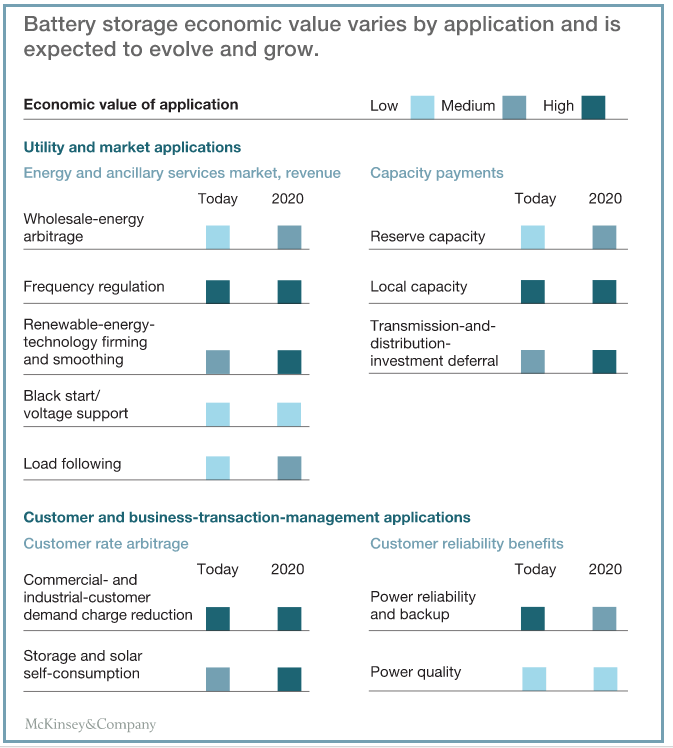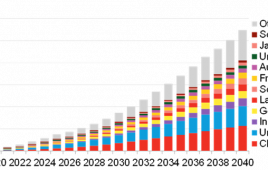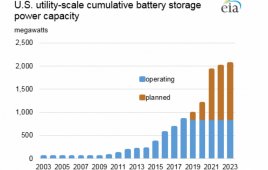This article comes from McKinsey&Company and is authored by David Frankel and Amy Wagner

At today’s lower prices, storage is starting to play a broader role in energy markets, moving from niche uses such as grid balancing to broader ones such as replacing conventional power generators for reliability,1providing power-quality services, and supporting renewables integration.
Storage prices are dropping faster than most expected, due to the growing market for consumer electronics and demand for electric vehicles (EVs). Major players in Asia, Europe, and the United States are all scaling up lithium-ion manufacturing to serve EV and other power applications. No surprise, then, that battery-pack costs are down to less than $230 per kilowatt-hour in 2016, compared with almost $1,000 per kilowatt-hour in 2010.
McKinsey research has found that storage is already economical for many commercial customers to reduce their peak consumption levels. At today’s lower prices, storage is starting to play a broader role in energy markets, moving from niche uses such as grid balancing to broader ones such as replacing conventional power generators for reliability,1providing power-quality services, and supporting renewables integration.
Further, given regulatory changes to pare back incentives for solar in many markets, the idea of combining solar with storage to enable households to make and consume their own power on demand, instead of exporting power to the grid, is beginning to be an attractive opportunity for customers (sometimes referred to as partial grid defection). We believe these markets will continue to expand, creating a significant challenge for utilities faced with flat or declining customer demand. Eventually, combining solar with storage and a small electrical generator (known as full grid defection) will make economic sense—in a matter of years, not decades, for some customers in high-cost markets.
In this article, we consider, as these trends play out, how storage could transform the operations of grids and power markets, the ways that customers consume and produce power, and the roles of utilities and third parties. Our analysis is directed mostly at developments in Europe and the United States; the evolution of storage could and probably will take a different course in other markets.
Implications for the utility industry
Storage can be deployed on the grid and at an individual consumer’s home or business. A complex technology, its economics are shaped by customer type, location, grid needs, regulations, customer load shape, rate structure, and nature of the application. It is also uniquely flexible in its ability to stack value streams and change its dispatch to serve different needs over the course of a year or even an hour. These value streams are growing both in value and in market scale.
For the rest of the article: https://goo.gl/hru30s
Filed Under: Energy storage




